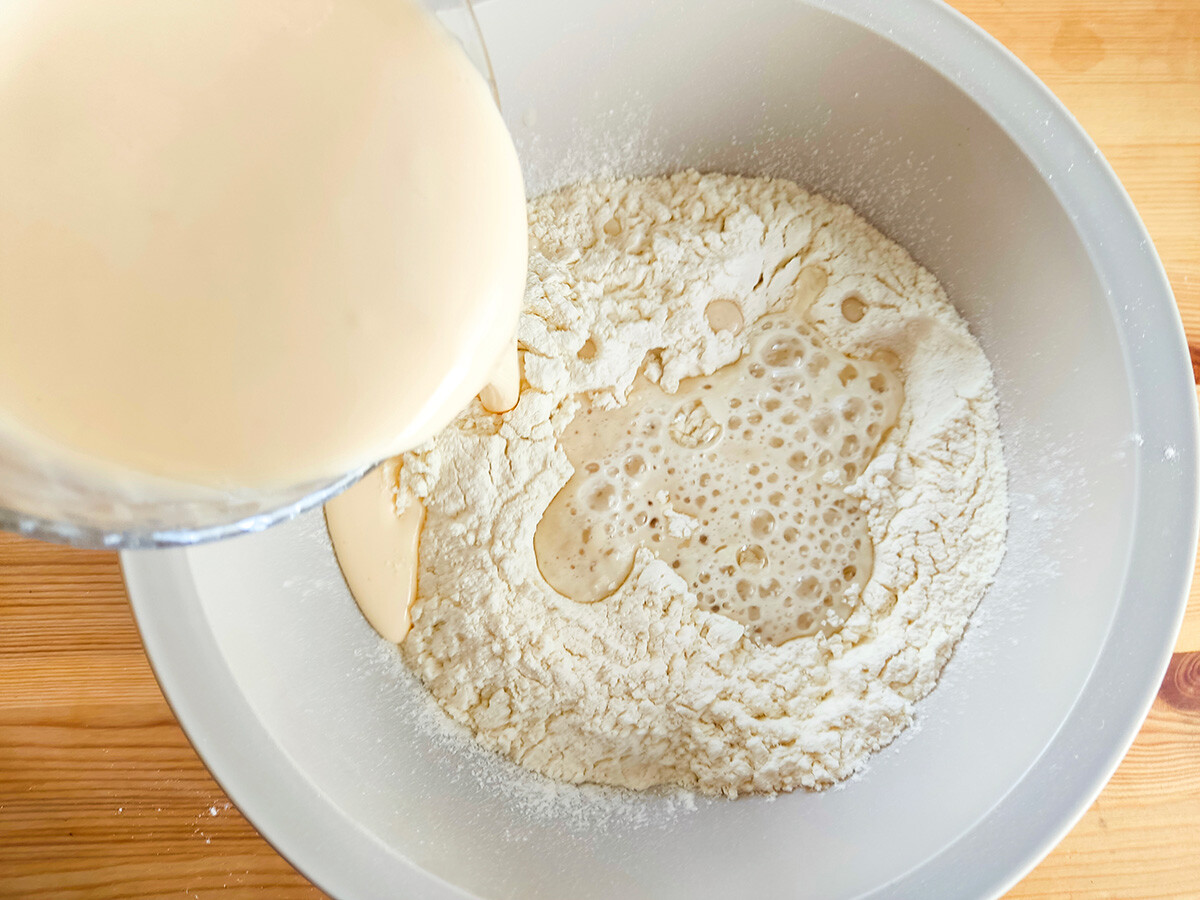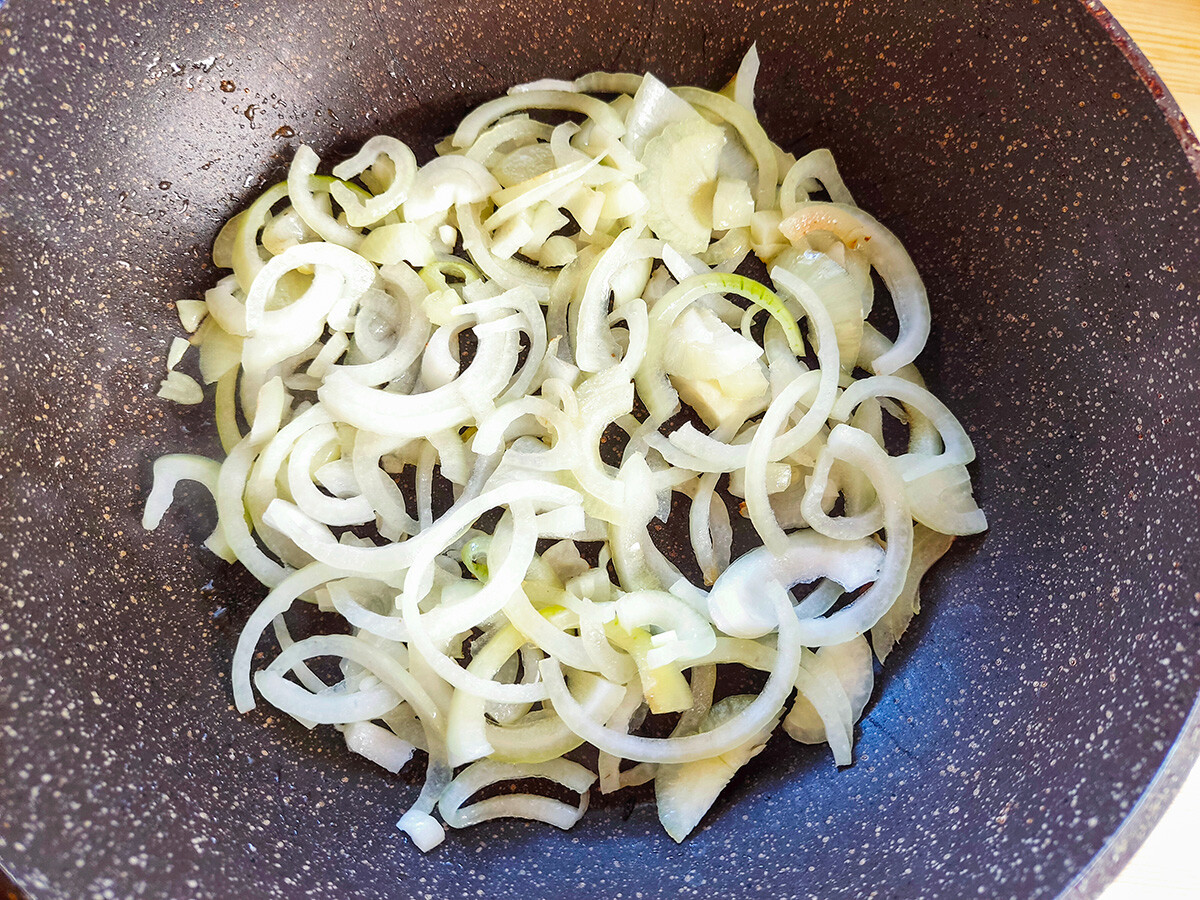
From boring leftovers to a delicious pie.
Olga BrovkinaIn the world of culinary arts, there are certain dishes that transcend time, and that evolve with the cultures they belong to. Vekoshnik, the Old Russian equivalent of Italian pizza, is precisely one such dish.
According to one version, the name vekoshnik originates from the metal container in which it was traditionally baked, called veko ("eyelid" in English - due to its oval shape). The ‘eyelid’ in question was an ancient round or oval dish with low edges, primarily used for cooking.
According to another version, this pie owes its name to the word vekosh, or vetosh, which was used to denote whatever remained; in our case, it’s the remains of the meal. Vekoshnik was cooked to utilize leftover pieces of fish, meat, and other hearty dinner dishes after feasts. Housewives would roll out the thick dough, place it in the oiled eyelid, stretch the edges, and top it with leftover food items, along with various additional ingredients like onions, pickled cucumbers, salted mushrooms, boiled eggs and more.
In cases where the remaining food was less visually appealing, a different preparation method was used. The ingredients were evenly spread over half of the dough, then the second half was folded over and the edges were pinched, resulting in a closed vekoshnik, which is something close to what Italians call a calzone.
One of the most striking aspects of the Russian pie is its versatility when it comes to ingredients. There are no strict rules governing what can or cannot be put into it. You can find variations that include rye vekoshnik with peas or wheat vekoshnik with noodles.
As already stated, vekoshnik was originally served as a frugal way to repurpose leftovers. It wasn't until the post-Soviet period that it became an independent dish. Nowadays, vekoshnik is served in specialized restaurants of Russian cuisine, coming in various shapes, including oval, round, and square. They’re often stuffed with a mouthwatering array of fillings like meat, sausage, fish, porridge, pickles, sauerkraut, eggs, and are generously drizzled with sour cream. For my pie, today I’ve chosen buckwheat with meat and pickles. Let’s cook it together!

1. Let’s start by preparing the dough. Sift the wheat flour into a mixing bowl.

2. In a separate container, dissolve the yeast and 10 g of sugar in warm water. Let it sit for 15 minutes until it becomes frothy.

3. In another bowl, mix the egg with salt and the remaining sugar. Then, add the sour cream and blend until smooth.

4. Combine the egg-sour cream mixture with the yeast-water mixture, and add half of the vegetable oil to the sifted flour.

5. Begin kneading the dough. It will be soft and sticky, so knead it for a while using a scraper. Eventually, the dough should stop sticking to your hands and the work surface.

6. Place the kneaded dough in a greased bowl with vegetable oil and cover it. Allow it to rise in a warm place until it increases in size by 2.5 to 3 times.

7. While the dough is rising, prepare the filling. Slice the onions into large feathers and fry them until golden brown.

8. Cut the pickles into strips and briefly simmer them in a pan with a little boiling water for about 10-12 minutes, then drain them in a sieve.

9. Thinly slice the meat into strips. You can briefly fry it, if you prefer. Mix all the ingredients together for the filling, including the sour cream.

10. Preheat your oven to 220°C. Once the dough has risen, knead it again, divide into 2 equal parts, and place the first part on a baking sheet lined with parchment paper. Grease your hands with vegetable oil and gently stretch the dough into a circle or oval shape. Create small edges around the dough.

11. Now, spread the prepared filling evenly over the dough.

12. Place the pie in the preheated oven and bake until it's golden brown and fully cooked. Typically, it takes about 12-18 minutes for an open pie to bake. Once baked, remove the pie from the oven and allow it to cool slightly.

13. Slice and serve your homemade vekoshnik. Enjoy!

Dear readers,
Our website and social media accounts are under threat of being restricted or banned, due to the current circumstances. So, to keep up with our latest content, simply do the following:
Subscribe to our Telegram channels: Russia Beyond and The Russian Kitchen
Subscribe to our weekly email newsletter
Enable push notifications on our website
Install a VPN service on your computer and/or phone to have access to our website, even if it is blocked in your country
If using any of Russia Beyond's content, partly or in full, always provide an active hyperlink to the original material.
Subscribe
to our newsletter!
Get the week's best stories straight to your inbox